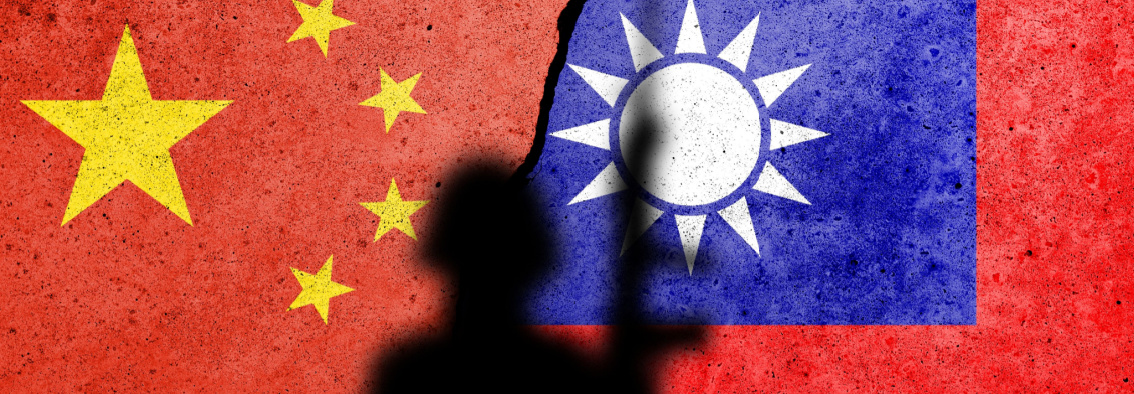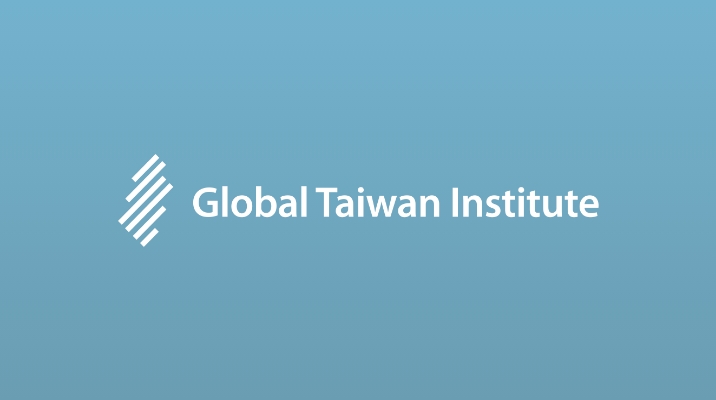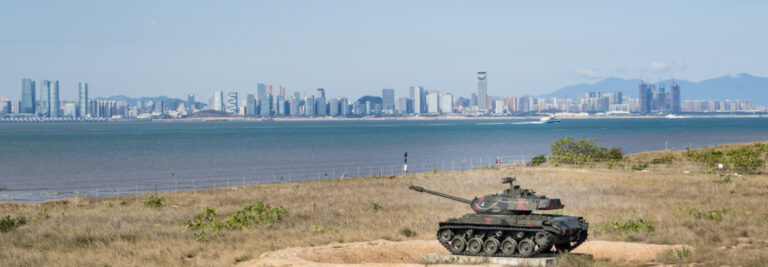Frequent flyers through Europe are used to the occasional flight delay. Overloaded airports and carefully calibrated low-cost models mean that even slight disruptions can wreak havoc across the continent—with IT faults, power failures, and even extreme weather all causing mass delays and cancellations in recent years. Yet, in September this year, travelers in Copenhagen and Oslo experienced a novel form of disruption: large drones detected nearby the airports caused closures and flights to be grounded. Suspicion soon turned to Russia, and in particular, toward several nearby shadow-fleet linked vessels that could have served as launchpads.
For Europe, disruption is the new normal. While war rages in Ukraine, the rest of the continent has been subjected to an onslaught of “gray zone” or “sub-threshold” attacks from Russia—operations that stop short of open conflict but strike at critical vulnerabilities. These have ranged from recent cyberattacks that attempted to cut off an entire city’s water supply, to waves of arson incidents and sabotage of undersea cables. From London to Warsaw, European policymakers are not only scrambling for a response, but are even struggling to find the right words to describe this new reality to their citizens. German Chancellor Friedrich Merz’s characterization of Europe as “not at war … but no longer at peace” demonstrates how traditional policy thinking struggles to encapsulate the new reality of gray zone conflict.
In navigating this shadowy theatre of conflict, Europe would do well to look eastward—not to Moscow, but to Taipei. Taiwan has endured relentless gray zone pressure from China and has developed a sophisticated toolkit to counter it. Much like Russia, Beijing’s gray zone strategy aims to maximize coercive pressure on Taiwan while minimizing its ability to respond. This has played out with near daily military incursions into Taiwan’s Air-Defense Identification Zone (ADIZ), complex information manipulation campaigns, and a deluge of malicious cyber-activity, such that Taiwan is now the target for over 55 percent of all cyber-attacks in the Asia-Pacific region. Europe, now facing a similar barrage of threats, can draw practical lessons from Taiwan’s hard-earned experience.
Undersea Sabotage
Consider the case of suspected sabotage attacks against critical undersea infrastructure. Suspicious breakages in the Baltic Sea have mirrored those around Taiwan. Between October 2023 and December 2024, a series of vessels with Russian or Chinese links—the Newnew Polar Bear, Yi Peng 3, and Eagle S—damaged key regional energy and communications cables including the Balticconnector, FEC-1, and C-Lion1. Just weeks later, in January 2025, the Hong Kong-owned Xingshun 39 struck the TPE Cable System inside Taiwan’s territorial waters. A similar case followed in February 2025, when the Hong Tai 58 severed Taiwan’s TPKM3 cable. Across these cases, the gray zone tactics look remarkably similar. Ships dragged anchors for long distances, a malfunction that the crew could hardly have ignored. Vessels also made irregular, zig-zag movements directly over known cable routes, movements inconsistent with normal commercial navigation, while also often disabling tracking systems or switching identities mid-voyage.
Yet, while the sabotage threat is similar, Europe’s response has lagged noticeably behind Taiwan’s. Undersea cable sabotage exploits significant loopholes in international maritime law, which severely constrain the ability of governments to hold suspected saboteurs accountable. In Finland, a long awaited case against the aforementioned Eagle S collapsed after a Finnish court ruled that, since the cable damage took place in international waters, it had no jurisdiction over the issue. Contrast this with Taiwan, which has successfully sentenced the crew of the Hongtai 58 to three years in prison for damaging Taiwan’s TPKM3 communication cable in February 2025—sending a strong signal to future would-be saboteurs. To further strengthen deterrence, the Taiwanese government is proposing a raft of seven legislative amendments to add to its response toolkit, ranging from new powers to seize vessels and equipment, to tougher penalties for those damaging undersea infrastructure and a clamp down on “dark-fleet” vessels’ evading detection by disabling AIS transponders. Meanwhile, the EU’s ambitious Action Plan on Cable Security is still only at the risk assessment and mapping stage—more than 8 months after it was first announced.
Lessons from Taiwan
Taiwan’s experience points to three critical lessons for Europe.
First, resisting gray zone warfare requires whole-of-government coordination. Taiwan has recognized that responding to gray zone threats cannot be left to the military alone. Coordination with civilian departments is essential, both for effective response and to avoid escalation. Taiwan’s extensive experience with earthquakes and typhoons also means that it has developed a strong eco-system of government agencies and volunteer groups that can mobilize quickly and effectively—though, as the recent case of flooding in Hualien demonstrates, communication between central and local authorities still needs improvement.
In the case of undersea cables, Taiwan’s inter-agency coordination is already bearing fruit. Rapid communication between Taiwan’s telecommunications providers, coast guard and other government agencies enabled the pursuit and interdiction of the Hong Tai 58, without which the successful prosecution for undersea cable damage would have been impossible.
Secondly, technology matters. Taiwan is investing heavily in its ability to monitor and respond to gray zone threats. Its Legislative Yuan (立法院) has recently approved the purchase of new sea-borne drones to enhance maritime domain awareness. At the same time, Taiwan is considering adopting satellite hosted synthetic aperture radar (SAR) technologies to better track China’s so-called “dark-fleet” of vessels that disable their transponders. By contrast, European systems remain focused on conventional threats like military vessels—it is far easier to spot a Russian warship than a suspicious cargo ship among the 7,600 vessels crossing the North Sea each day. Yet, these conspicuous targets are rarely the perpetrators of gray zone sabotage. In this context, AI-driven technologies to collect and analyze big datasets are fast becoming as important as weaponry in defending against these threats.
Thirdly, resilience requires a “whole-of-society” approach. Some of the most innovative solutions are found in the private sector and among civil society organizations. Taiwan’s new “whole-of-society resilience” program aims to bring together stakeholders from across different sectors of government, industry, and civil society to discuss how to best bolster defense. One such example is in countering foreign informational manipulation and interference (FIMI), where a number of Taiwanese civil society groups have developed innovative approaches. The nonprofit Cofacts has developed an open-source, citizen-driven fact-checking platform that aims to combat disinformation and fake news, while the Taiwan Information Environment Research Center (IORG, 台灣資訊環境研究中心) works with schools to develop media literacy skills among children and young people. These initiatives not only empower citizens, but also lighten the load on government agencies. Equipping the public to understand and prepare for gray zone threats also helps avoid mass panic when things go wrong. For example, businesses which maintain back-up data systems will be much better equipped if major undersea cable sabotage causes slowdowns in cloud servers.
Mounting Urgency
As Russia intensifies its gray zone warfare, Europe cannot afford complacency. Cooperation with Taiwan is pivotal to mounting an effective response. While the sensitivities of the various “One-China” policies held by European governments may limit military cooperation with Taiwan, there is ample scope for civilian collaboration. Dialogue between coast guard administrations could cover a range of issues, from tackling illegal fishing to protecting undersea cables—all of which could develop capabilities useful in a gray zone or conflict scenario. Similarly, cyber security, disaster response, and public health could each be a topic for exchange between relevant government departments, all of which ultimately serve to bolster both Europe and Taiwan’s resilience. Such exchange could happen on a bilateral basis, or as part of Taiwan’s Global Cooperation and Training Framework (GCTF), which already provides an established platform for European governments to engage with Taiwan. Several European countries have already taken part in a number of GCTF forums on issues such as Foreign Information Manipulation and Interference (FIMI) and supply chain resilience However, such cooperation need not be limited to government exchange. Charities, non-governmental organizations and other civil society groups often play an important role in disaster response—as illustrated by tens of thousands of “shovel superheroes” (鏟子超人) who volunteered for recovery efforts following severe flooding in Taiwan’s Hualien province.
Alarming signs of deepening Russia-China coordination further underscores the urgency of meaningful cooperation between Europe and Taiwan. The suspicious activities of a number of Chinese vessels in the Baltic Sea and the presence of Russian vessels in the Taiwan Strait are just some of the indications that China and Russia may be coordinating in each other’s gray zone attacks. Beijing and Moscow have a shared objective in weakening NATO and stopping its perceived eastward expansion, while Chinese officials have openly stated that they seek an end to the war in Ukraine that is favorable to Russia. These shared interests form the backdrop to a deepening strategic partnership between Russia and China, which encompasses large volumes of trade between the two countries, China’s supply of dual-use goods for Russia’s war efforts in Ukraine, and an uptick in joint military drills across the globe. As China’s role in sustaining and assisting Russia’s hybrid warfare in Europe grows, policymakers across the continent would do well to draw from Taiwan’s deep expertise. By listening to Taiwan and learning from its experience, Europe can build the resilience needed to preserve peace and prosperity in an increasingly dangerous world.
The main point: As Europe faces an onslaught of hybrid threats from Russia, it should look to Taiwan as a model and partner. From protecting undersea cables to countering foreign information manipulation and interference, Taiwan is leading the way in defending against a range of gray zone operations. Taking a whole-of-society approach—engaging government, businesses and civil society—is critical to success.





